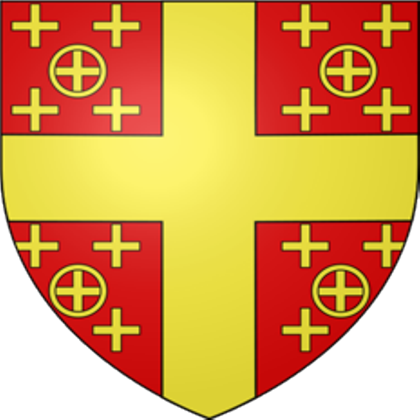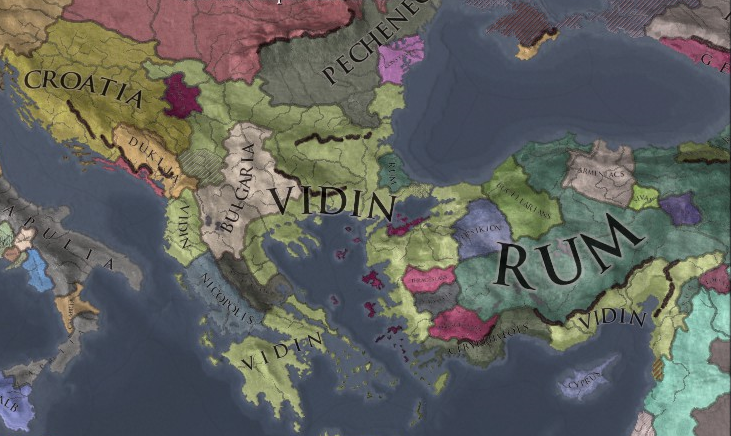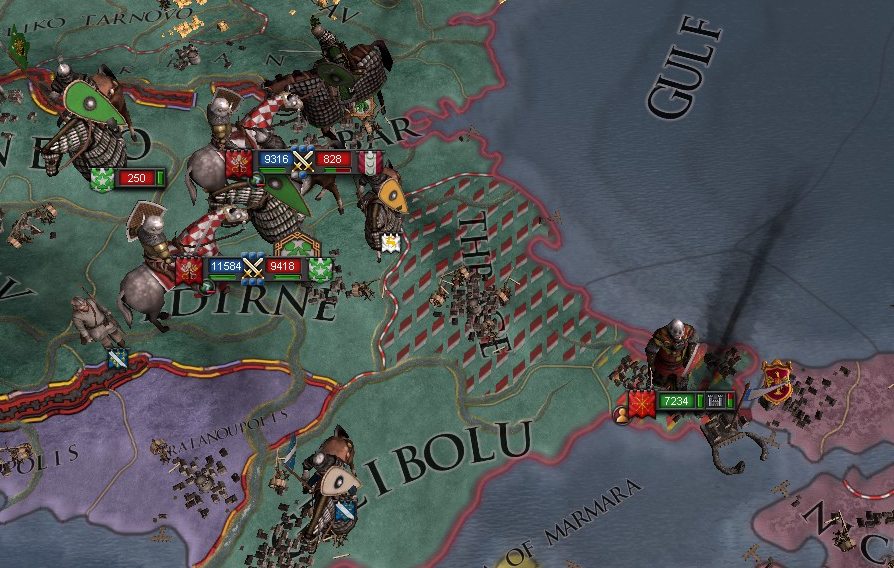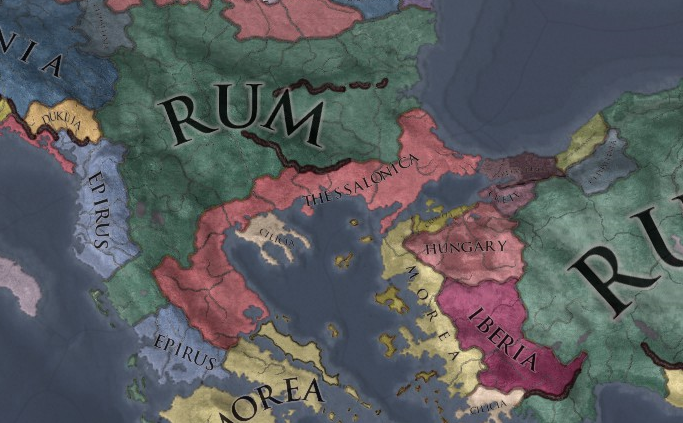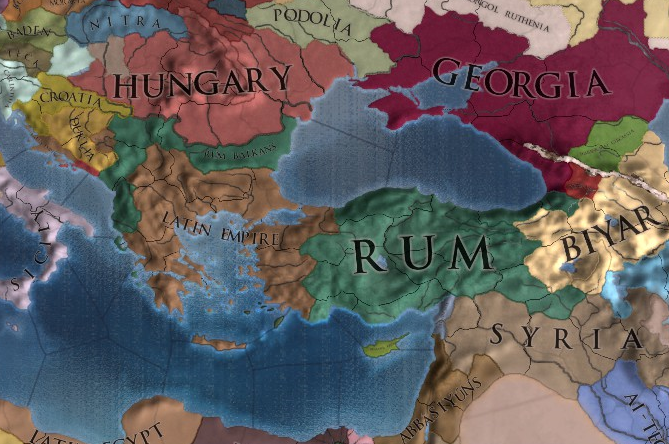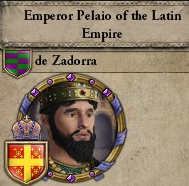The Envy of Kings
Introduction
Pelaio de Zadorra was a child born into a blessed lineage -- his father ruled the Latin Empire from Constantinople, and his mother reigned over the Empire of Cordoba in Iberia. When they passed, both realms were united under Pelaio's rule. At the age of 17, Pelaio came to rule over an expansive Mediterranean Empire that included Greece, southern Italy, most of hte Iberian Peninsula, and large expanses of the North African coast. After his second coronation, Emperor de Zadorra remarked that his vast territory was "The envy of all the Kings of Europe," and swore that his Latin Empire would prove the truest successor to the legacy of Rome.
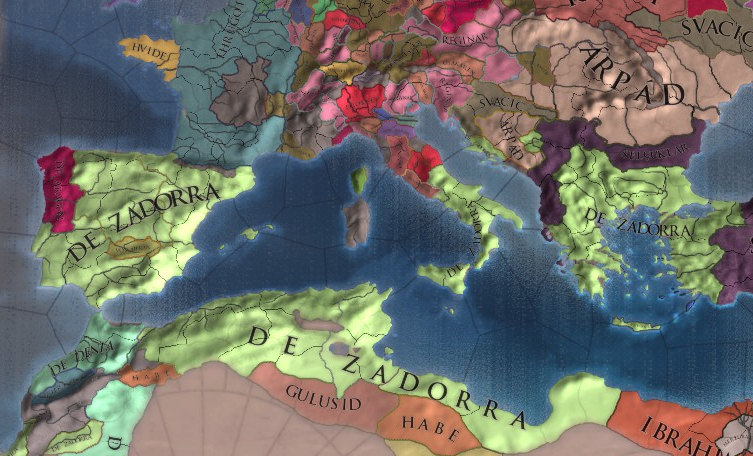
Lands controlled by the de Zadorra dynasty of the Latin Empire.
As the Medieval Era prepared to give way to the Age of Discovery, the Latin Empire was a realm with the potential for incredible dominance and great peril. With large portions of Iberia, Italy, and Greece under its control, and with sway over the great capital cities of Constantinople and Cordoba, the Latin Empire controlled immense territory, great armies, and vast wealth. Still, the realm was spread out into four different geographical regions with no land connections between them, and strong local governments that would have to be mastered in order to create a strong, integrated state. The de Zadorra Emperors had many challenges ahead of them, but they also held the potential to become the undisputed heirs to the Roman Empire.
Overview
This game is a continuation of my recently completed CK2 project, "¡Santiago y cierra, España!", which is linked in the title of this post. For those who did not follow it in the CK2 form, began in 1066 with Belasco de Zadorra, Count of Alava, and followed the path of his descendants from minor Navarrese Counts to the Basque Emperors of a multi-ethnic Empire of Cordoba that covered nearly 2/3 of the Iberian Peninsula and stretches of Africa. A successful crusade for Thessalonica resulted in a de Zadorra King being enthroned in Constantinople, who eventually crafted the Latin Empire and inherited Sicily into the realm. At the every end of the game, a marriage between those two branches of the family resulted in the combination of Cordoba and the Latin Empire into a Mediterranean behemoth, which we now find ourselves following in this project.
The game is EU4 1.19.2.0, with no mods except for the converted scenario from CK2, which I have made some mods to.
For the beginning of the game, I've chosen to place Cordoba and Sicily in a personal union with the Latin Empire, both to add a little challenge to my playthrough and to represent the fact that this is a decentralized and likely fragile empire that will require some serious work to bring together into a solid, cohesive mega-empire. I'm playing on Normal difficulty with a Random New World setup. I've also done a little bit of idea modding for the three counties of the Latin Empire in an attempt to give them some purposeful flavor.
My primary goal in this game is to attempt to tell a good story and roleplay to the character of the nation and leader traits whenever possible. Beyond that, uniting the separate kingdoms of the empire int one is a top goal, and I may even try for a Roman Empire restoration! Additionally, I will likely make some aggressive attempts at exploring and colonizing the new world, since an RNW setup offers the chance to do real exploration with unpredictable results. I will be writing this and sharing time with another upcoming CK2 project, so updates will often alternate between games... Variety helps keep me fresh!
Anyway, for those who have followed from the CK2 playthrough and for those who may jump on anew from the EU4 forum, welcome! I look forward to another awesome trip through AARland and having a good time writing and discussing with you guys. I'll leave you with a high-level snapshot of the map before I start writing some introductory posts... Let the journey begin!

- 2
- 1


